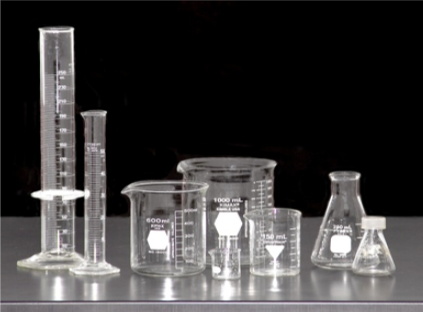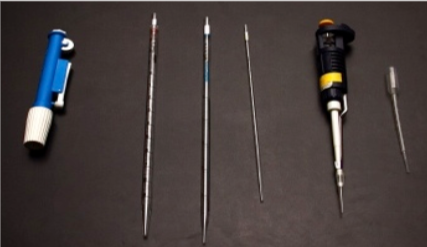2.2: Introduction
- Page ID
- 40156
In today’s lab you will re-familiarize yourself with basic lab equipment used for measuring. It is important to become proficient with the use of these items and the metric system because it is what scientists use, but equally importantly, it is what you will use during all subsequent lab activities. The metric system is a decimal based system that is very easy to use and convert within, once you get the hang of it. The practice in this lab should help make using the metric system more natural and automatic.
The basic units in the metric system are:
- Weight: gram (g)
- Length: meter (m)
- Volume: liter (L)
- Temperature: Celsius (C) (not technically metric, but the system that scientists use)
There are several benchmarks for getting a feel of the metric system. For weight, a dollar bill weighs one gram and a penny weighs 2.5g. So if weighing something out that is 25g, think about the weight of ten pennies in your hand.
For length, the meter is 39.37 inches, so slightly longer than a yard (which is 3 feet). A 100-yard football field is slightly more than 91 meters. On a smaller scale, the length of a centimeter is about the width of a standard paperclip or the average width of the nail on your pinky finger! And a millimeter is about the width of your ATM card.
You are already familiar with one and two liter (2L) volumes due to the packaging of soda and water bottles. An additional point of reference is that 1 cup (8 ounces) is about 237 milliliters. So if you had to measure a volume of 250ml it would be slightly more than one cup.
Finally, think about temperature. Your body temperature is probably about \(98.6 ^{\circ}F\), which is \(37 ^{\circ}C\). You will notice in our labs that we often set the incubators to \(34-35 ^{\circ}C\), which is a little below body temperature at \(95 ^{\circ}F\). Room temperature, \(70 ^{\circ}F\), is \(21 ^{\circ}C\). Now you know that if you are travelling and the temperature is \(25 ^{\circ}C\), it will be a beautiful day (\(77 ^{\circ}F\)). Of course \(100 ^{\circ}C\) is boiling (\(212 ^{\circ}F\)).
The good news is that we are not going to ask you to convert from standard U.S. measures to metric very often. Rather we just want you to use the metric system and eventually it will become familiar and easy. The other good news, though it takes a while to catch on sometimes (as you may know from previous coursework), it is very easy to convert within the metric system. You just have to get the hang of it, use it, and it will stick.
These are the prefixes that are most commonly used in basic science labs. The prefixes are the same for gram, meter, and Liter:
|
Prefix |
Abbreviation |
Decimal equivalent |
Exponential Equivalent |
|---|---|---|---|
|
pico |
p |
0.000000000001 |
10-12 |
|
nano |
n |
0.000000001 |
10-9 |
|
micro |
u |
0.000001 |
10-6 |
|
milli |
m |
0.001 |
10-3 |
|
centi |
c |
0.01 |
10-2 |
|
none |
|
1.0 |
100 =1 |
|
kilo |
k |
1000.0 |
103 |
|
giga |
g |
1,000,000,000.0 |
109 |
It should be noted that the common term for a micrometer is "micron" (um).
Equipment
Test Tubes and Racks

Petri Dishes

Glassware

Pipettes

Contributors and Attributions
Kelly C. Burke (College of the Canyons)


